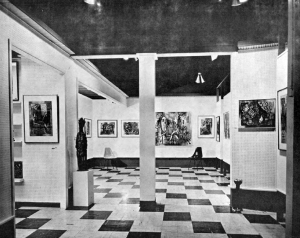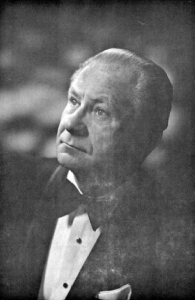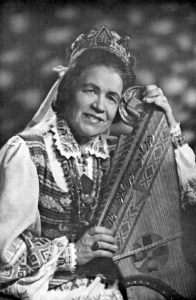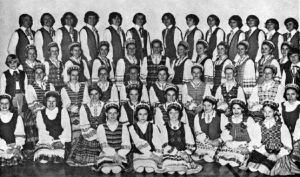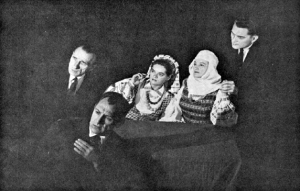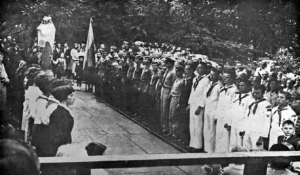Part III: the Lithuanian Community of Cleveland to World War II
Contributions of the Early Lithuanians
Contributions of the early Lithuanian immigrants were many and diversified, as recognized by Alice P. Gannett, Head Resident at the Goodrich Social Settlement in Cleveland.[1] Commenting at a hotel banquet held by Cleveland Lithuanians to honor delegates from the newly established independent republic of Lithuania, she made the following comment:
Few native Americans have better appreciation of the worth of American institutions, representative government, liberty of thought and speech than do these new citizens, whose mother country is struggling for Democracy. Nothing could have been more inspiring, more likely to renew one’s faith in the old ideals of America than to hear the constant references, in this meeting for Lithuanian independence, to America’s institutions as models to be followed in the new republic struggling into existence. May we always be worthy of such faith!
Lithuanians are forming a valuable element in our country, intellectual, eager for the education that has been denied them in the past, self-respecting, industrious and ambitious, they are helping to form that ideal American who is enriched by the treasures each nationality has brought to our shores.
Perhaps no other visible symbol better represents the work of these immigrants than the Lithuanian Cultural Garden, which is part of one of the most unique parks in the country, The Cleveland Cultural Gardens. Founded in 1916, the Shakespeare Garden was the first of a series of gardens to be established to represent the diverse cultures of the inhabitants of Cleveland. The Lithuanian garden was officially dedicated in 1933 with the presentation to the City of Cleveland of the bust of the great Lithuanian freedom fighter, Dr. Jonas Basanavičivs. Two other busts, that of Dr. Vincas Kudirka, who was the author of the Lithuanian national anthem, and the Right Reverend Jonas Maciulis-Maironis, who fought for the use of the Lithuanian language in Lithuania when it was prohibited by the Russians, are also located there. Kudirka’s bust was presented by the Ramovė Officers Club in Kaunas, Lithuania, and the Dr. Vincas Kudirka Society of Cleveland. Maironis’ bust was donated by St. George’s Catholic Church. Also found in the Lithuanian Garden are the Pillars of Gediminas, who helped build Lithuania into one of the largest states of medieval Europe; the fountain dedicated to Birutė, the vestal virgin of the pagan god Perkunas; two oak trees representing the Lithuanian Alliance of America and the Lithuanian Roman Catholic Alliance of America; and a linden tree planted by Anna Kaskas, who for many years starred with the New York Metropolitan Opera.[2]
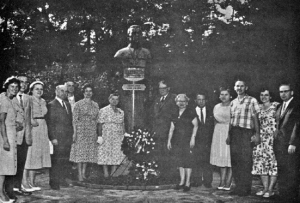
With the outbreak of World War II, Lithuanian-Americans were stunned to see Russia swallow up Lithuania. Some actively enlisted in the armed forces to do what they could, while others organized at home, collecting funds to aid those fleeing Russian persecution, and protesting the terrible act. But all was to no avail, since when the hostilities ended Lithuania remained under Russian subjugation. Nevertheless, the Lithuanians of Cleveland did not give up hope, and with the many Lithuanian refugees who had fled the Red onslaught and settled in Cleveland, they continued to push for the freedom of Lithuania.
